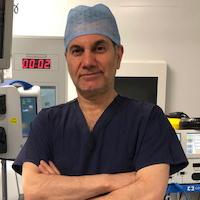There are a lot of surgeries and changes that you can consider for your body. A rhinoplasty is one of them. While there are some that think a rhinoplasty is just a simple cosmetic change that is done for vanity and nothing else, the reality is very different! There are many different things to understand about a rhinoplasty, and a proper definition of Rhinoplasty is a good a place to start.
What is a rhinoplasty?
A rhinoplasty is more commonly known as a “nose job”, and it’s when a surgery is performed on the nose itself. The focus of the surgery, regardless of what type of rhinoplasty you get, is to change the shape of the nose and correct any functional problems such as breathing and nasal blockage. While the changes a rhinoplasty brings are considered cosmetic changes, a rhinoplasty is not always done simply to make the nose look better.
Why do you need a rhinoplasty?
From shape to proportions, a patient’s nose may not always be the way they would want it. A rhinoplasty is most commonly requested to help change one or both of these things so that a patient is more comfortable for the appearance and feel of their nose.
However, rhinoplasties can also be helpful in fixing a deformity from an injury (such as a nose break not healing correctly), or fixing a birth defect. In some cases, it can even be performed to help improve breathing, which is common with conditions such as a deviated nasal septum.
Can anyone get a rhinoplasty?
Anyone can request to have a rhinoplasty done, as long as the reasons are understood and approved of by your surgeon. Just like any other surgery, there are other things to consider before a Rhinoplasty can be performed. For example:
- Other facial features: Regardless of your reason for requesting a rhinoplasty, a specialist’s job is to ensure that having the surgery will not conflict with the rest of your facial features once the recovery is done. In some cases, there might be additional facial surgery required to help factor that in.
- A physical exam: A detailed and thorough physical exam of the nose and face during a consultation with your surgeon including photographs is an essential part of the process to help the specialist make a plan for what changes will best suit the patient and any other things that they’ll need to be aware of before booking the surgery.
- A careful interview process: Additionally, a patient consultation helps both the surgeon and the patient understand what the surgery can do as well as what it can’t do. This can help set realistic expectations on the patient’s side and also make sure that the specialist and the patient are on the same page for the surgery and its results.
A rhinoplasty, despite the cultural and societal belief, is as important and detailed as any other kind of surgery out there. Done regularly, it has helped many patients enjoy better quality of life in terms of self-confidence and actual health benefits.

